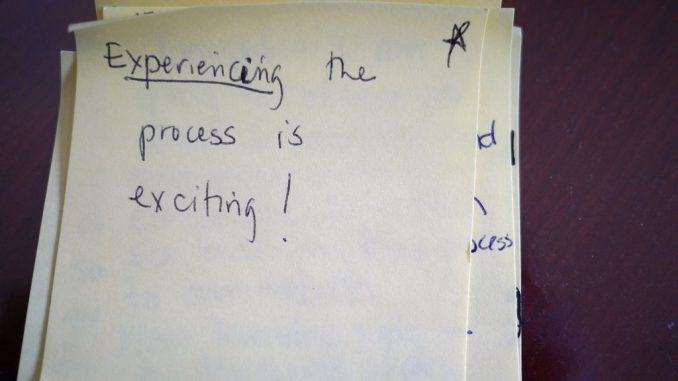
This is an evaluation guide.
The strategies listed below will elicit early feedback during a module. The feedback you receive can inform your academic practice, deepen your insights about your students are, and help you understand how your module/session operates during the term.
Midterm feedback session
(MFS) is a feedback technique conducted at the midpoint of the term so that the feedback from students can be utilized to make module adjustments before the end of the term. King’s Academy staff facilitate this process, which begins with a conversation about key questions related to readings, discussions, support, includes a 40 minute class session where KA staff gather verbal and written responses, and a follow-up conversation with the instructor to interpret the results and discuss possible adjustments for the remainder of the term. Please note: This service must be requested by the instructor of the module.
Online midterm survey
Around the middle of your module, using KEATS, Polleverywhere, or a Microsoft Form, ask students four simple questions:
- What’s going well?
- What could be improved?
- Two questions you select, related to what you most want to know from your students to help you understand how the module is progressing. These questions can be open-ended or multiple choice. Examples:
- What reading has been most effective in helping you understand module content?
- When in the lab/tutorial/seminar, how do you use the lecture material to apply to your work/discussion?
- What coursework helped you most in practicing the concepts of the module?
- Which piece of feedback did you find most useful to apply to the next assignment?
Extra keyword: mid-term (so the Search picks up the hyphenated version.)
Stop-start-continue (online or post-its)
- One thing they wish for you to stop doing,
- One thing to start,
- One thing to continue doing (meaning what is going well).
The alternative variation variation broadens the focus away from the educator and towards a joint responsibility:
- What could [educators] do to improve your learning on [activity, course or module]?
- What could you do to improve your own learning…?
- What could King’s do to improve your learning…?
You can do this in the form of an online survey or poll using PollEverywhere (see KEATS > Staff help > Polleverywhere for access to the King’s subscription).
If you trust your students to respond constructively, at King’s Polleverywhere will let students do this publicly and anonymously, upvoting or downvoting comments. Effectively this means that students then do some of the data analysis themselves for you (however, do also provide a private way to respond in case students have something they want to say in private).
You gather those responses and do a quick tally of responses in each category. Then you want to further categorise those into what is feasible to do in this term, what you will consider for the next time you teach this module, and what to consider for the long term (maybe a major module modification for a year down the road).
Critical incident questionnaire (CIQ)
Stephen Brookfield (1995) devised five questions to prompt students to reflect on their module experience while giving you useful feedback as well:
The typical form has five questions with space beneath each question for the student to write a response.
- At what moment in the class this week did you feel most engaged with what was happening?
- At what moment in the class this week did you feel most distanced from what was happening?
- What action that anyone (teacher or student) took in class this week did you find most affirming and helpful?
- What action that anyone (teacher or student) took in class this week did you did most puzzling or confusing?
- What about the class this week surprised you the most? (This could be something about your own reactions to what went on, or something that someone did, or anything else that occurs to you.)
References
Brookfield, S. (2011) Becoming a Critically Reflective Teacher. San Francisco: Jossey-Bass
Featured image source: “Some of my favourite feedbacks from SWBLC12” by Ewan McIntosh is licensed under CC BY-NC 2.0

Leave a Reply